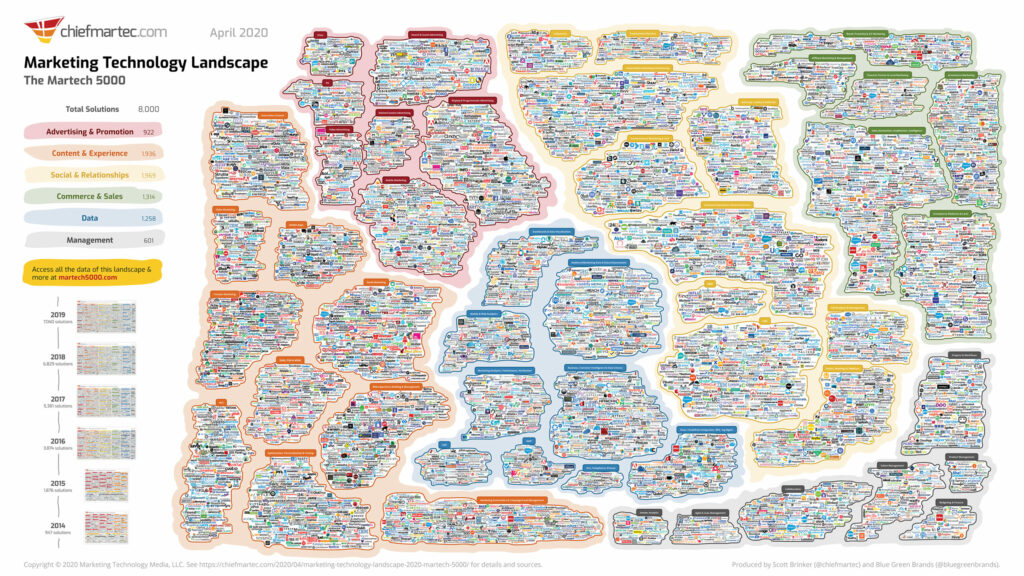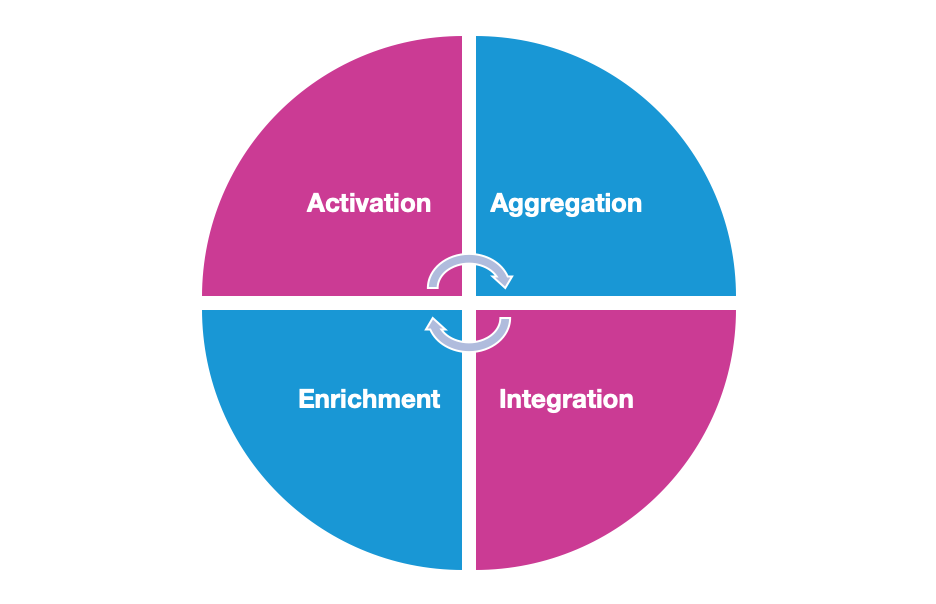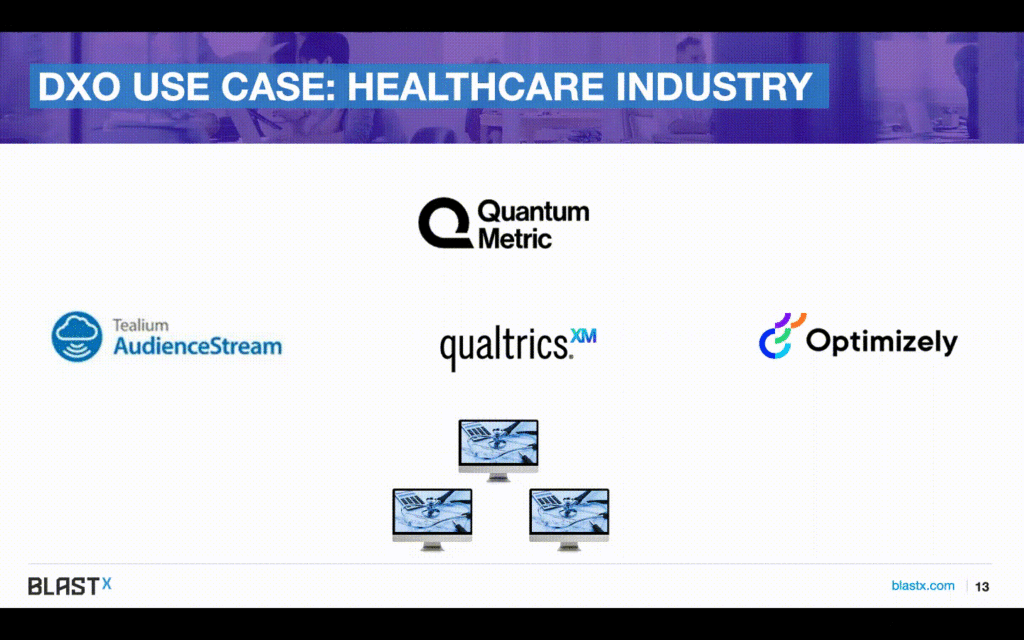If one had to summarize the priority for organizations considering digital experience optimization, it would be this – Understand that your customers are in control. As a customer, the organization must know me better by understanding my specific needs and interests. Gain and keep my trust by protecting my data and respecting my privacy. Finally, personalize my experience to show me value.
How we learn about our customers is changing with third-party cookies going away. It’s been largely discussed in the industry about the importance of shifting to a first-party data strategy for marketing activation. Taking it a step further, if brands really want to get the competitive advantage, they should also strategize for zero-party data collection. With customers demanding a personalized journey, zero-party data gives you that high quality data to inform your activation strategy. Moreover, since customers proactively share this data with you, there are less privacy concerns compared to other types of data capture.
With digital experience optimization, we need to stress the importance of creating the value exchange. This includes being thoughtful in the types of data you are collecting and ensuring that your customers see value in return, including delivering a highly relevant digital experience.
For organizations who have been focusing on digital experience optimization in recent years, none of this should come as a real surprise. Yet, why are organizations struggling to take meaningful action?
Here’s the Real Challenge in Meeting Customer Expectations
While customers want brands to listen, understand and act based on their customer data, there’s a real challenge in meeting these needs. At Blast, we’re seeing the primary difficulty in achieving this is due to fragmented customer data. Specifically, we find that brands face these three common issues:
- Their MarTech stack doesn’t interoperate well.
- Siloed data increases the difficulty in finding actionable insights.
- Without insights, there is a struggle to act on customer data in a meaningful way.
Your MarTech Stack Can Make or Break the Digital Experience
Much of the success with digital experience optimization will be determined by the quality of your MarTech stack. As observed by one of our client stakeholders, the Global Head of Data & Analytics, “Tacking on more tools is fragmenting the data.”
Much of the success with digital experience optimization will be determined by the quality of your MarTech stack.
A recurring theme we see with brands looking to optimize or expand their MarTech stack is that they tend to fall for the bells and whistles.

In having to navigate an ever-changing and complex MarTech landscape it’s easy to understand why brands lean on the bells and whistles presented during the vendor sales process. However, this approach often fails to account for one of the most important aspects within the MarTech stack – the ability to integrate.
In fact, according to the Mulesoft Connectivity Benchmark Report, “integration issues continue to slow down digital transformation for the vast majority (87%) of organizations.” Struggles with integrations directly impact the ability to unify and act on customer data, again, a common pain point we hear from stakeholders.
To move forward with digital experience optimization, brands must recognize that the quality of their MarTech stack is not about having the best MarTech but instead, having the right MarTech stack.
The Four Pillars for Evaluating Your MarTech Stack
There is no one perfect MarTech solution that fits all organizations or industries. It’s more about evaluating your technology and its effectiveness in meeting your organization’s specific objectives and priorities. At Blast, we are oftentimes brought in as a strategic partner to collaborate on a brand’s MarTech evaluation process. In these partnerships, we evaluate technology based on the four pillars below, which enables us to cut through the sales garbage and determine whether the specific technology is a right fit for the brand’s MarTech stack.

- Aggregation: Create an efficient and secure pipeline to import the customer data into a centralized system.
- Integration: Identify like users across the various data streams so your team can tell the complete story of your customers.
- Enrichment: Classification of your customers based on what they have done or are likely to do.
- Activation: Engage customers in a consistent and meaningful way across the digital experience, where your team can measure the impact.
In general, when evaluating a specific technology using the four pillars, we are looking to see if the technology helps drive at least one or more of these pillars forward. For example, will the technology help progress aggregation (e.g., help unify our customer data) or activation (e.g, enable us to activate across the customer journey). It’s important to conduct this evaluation in the context of the rest of your MarTech stack as well as your objectives and priorities for digital experience optimization.
For example, if activating on the customer journey with real-time personalization is a top priority for your organization, then you’ll want to ensure that the personalization platform, when considered within the rest of your MarTech stack, can execute or activate in real-time. In other words, you’ll want to ensure there are no unexpected latencies that occur due to integrating the platform with the rest of your MarTech stack (e.g., a customer data platform).
To summarize, the four pillars for evaluation helps teams understand whether the technology in question will have a positive impact on their digital experience optimization initiatives. A certain technology doesn’t need to have an impact on all four pillars but at the very least, it should progress one of the areas. More importantly, you’ll need to assess whether the technology will have an unexpected negative impact on any of these pillars (e.g., integration issues lead to greater latency period with enrichment and/or customer journey activation).
Having the Right MarTech Stack Makes All the Difference
Investing in the right MarTech stack results in digital experience optimization efforts becoming much more seamless. This includes breaking down silos and aggregating first-party and zero- party data collection, which is then available for creating valuable audience segments. Further, strong integrations across the technology allows for deeper analysis and actionable insights into specific customer journeys that teams can then incorporate into their personalization roadmap for activation. When personalizing the customer journey, you know your Martech stack is working for you when you can measure the business impact, specifically having bi-directional integrations that enables team to better understand the impacts of their DX efforts, from both a qualitative (e.g, Voice of Customer) and quantitative perspective.

When it comes to putting the right MarTech stack together, it really helps to think of it as a puzzle. Nathan Poorbaugh, a Principal Solutions Architect at Blast, says it best:
Designing a MarTech stack is like putting together a unique puzzle for your company. You can shave pieces off, force them together, or even ignore gaps, but you won’t get the full value from the overall picture.
If your organization is interested in having a strategic partner help you find the right MarTech stack, Blast can help. We have DXO experts who just happen to love solving puzzles.

